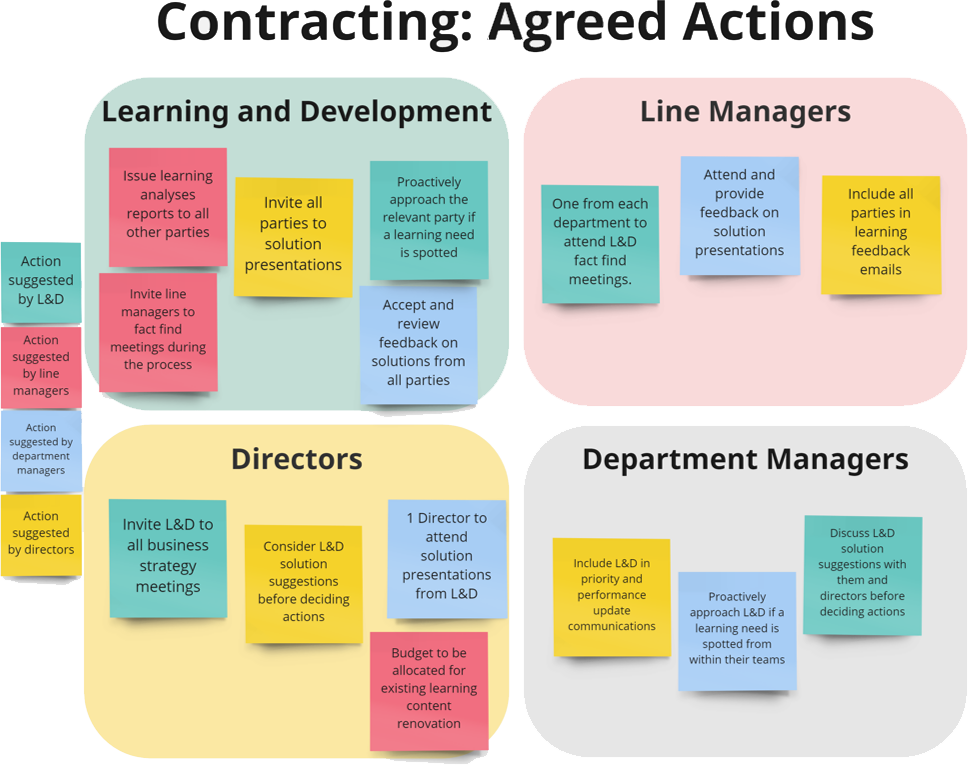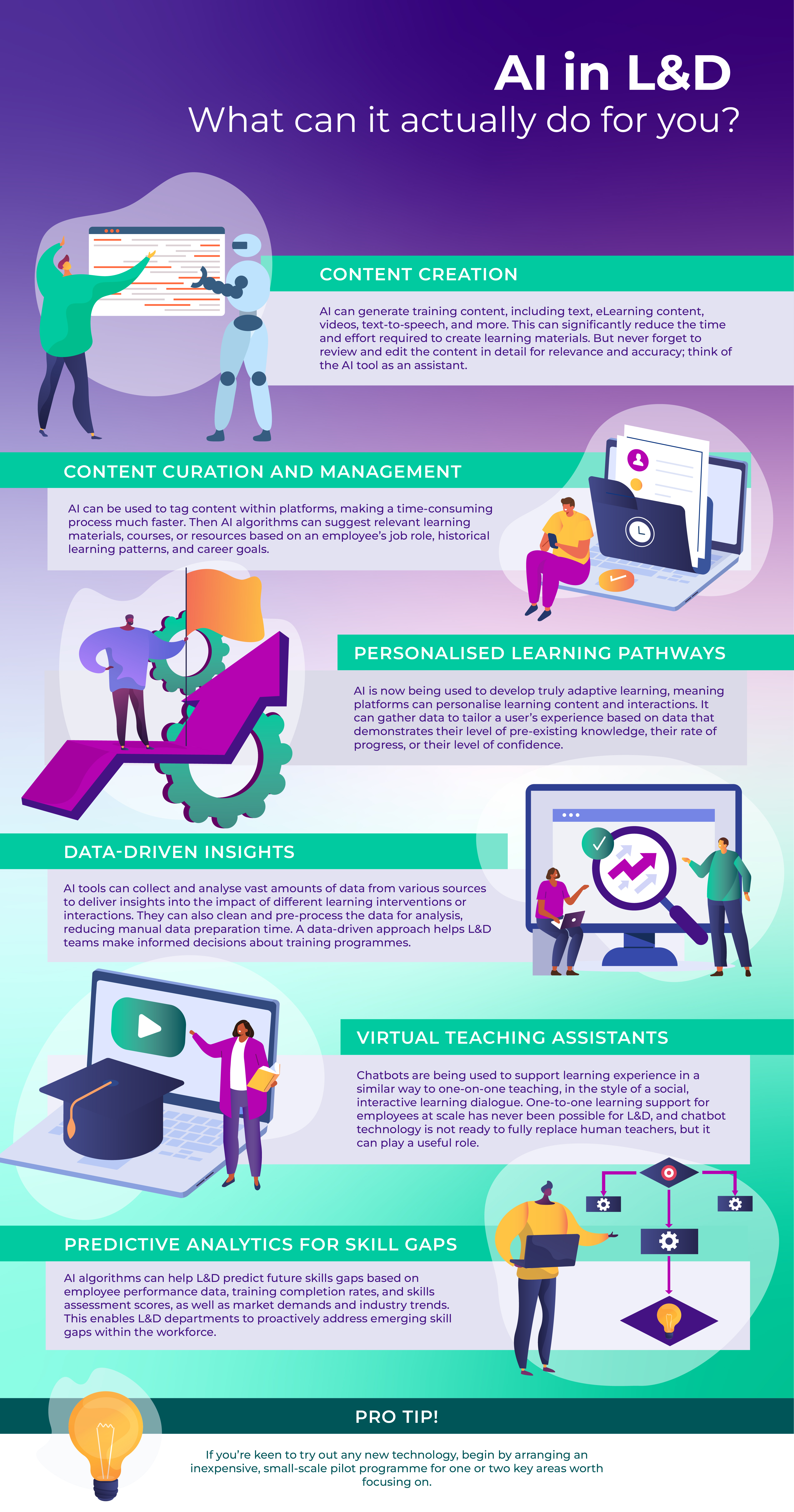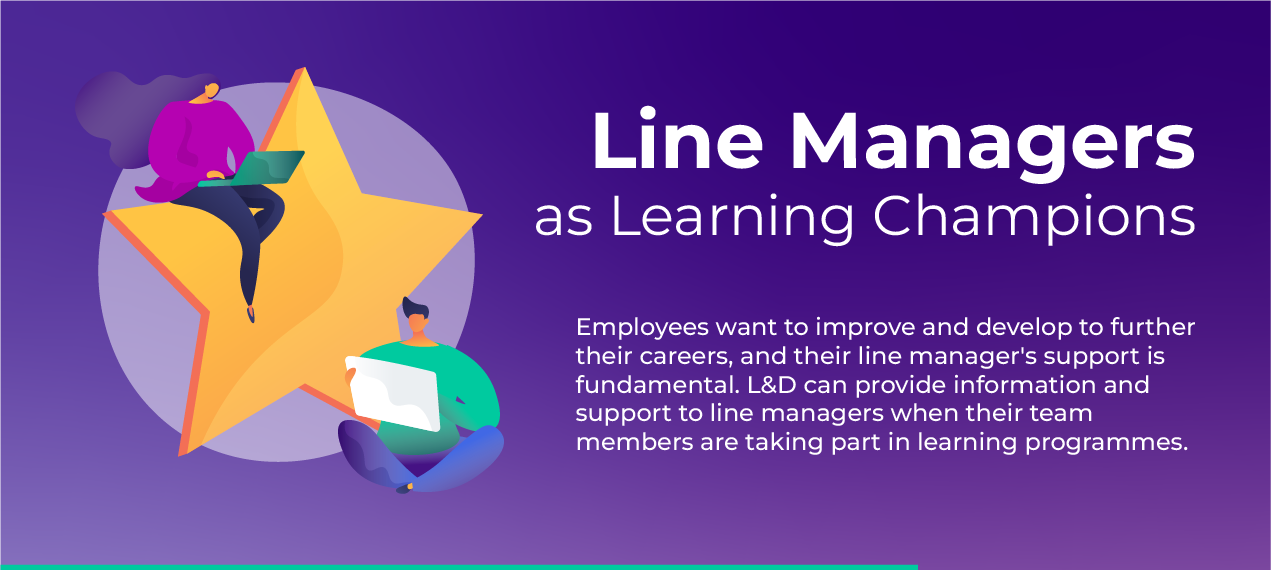Creating strong and productive relationships with our stakeholders is an integral part of working in an L&D team. This is particularly true at the start of the year, when these senior decision makers begin to lay out a strategy, road maps and deliverables for the coming months. This article should help you if you’re new to the corporate L&D field or stakeholder management, or even if you just want a quick reminder.
Whether your company has only a few employees or thousands, the start of the year will see an increased focus on business development and growth. This can mean that L&D professionals are asked to purely provide solutions and training, rather than being involved in the decision-making process and learning strategy. Working together at an earlier stage can reap real benefits.
Here are a few techniques to help you enhance and reinforce that relationship between the L&D team and client stakeholders:
1. Sharpen Those Business Skills
Understanding your business and its direction, terminology and environment is a great start for demonstrating your value to it. Think in three particular areas:
- Personal: Take some time to get familiar with the knowledge and skills that others in the business need to display. Do you understand the industry terminology? Are you familiar with the product or service cycle? Can you match your way of working to the way the business conducts itself and its values?
- The business: Ensure that you are completely up to date with the business strategy and the language used. A new year can give rise to new key business goals or phrases. Including these in your discussions with stakeholders is especially effective when the concepts are new and there is fresh passion behind them. This helps align the benefit of your proposals and function with the targets of the business.
- The industry: Are you up to date with the most recent developments within your business and that of L&D? Not keeping up to speed with key developments can undermine your credibility when presenting solutions. Understanding the industry itself and its direction will allow you to be proactive when identifying needs and solutions.
Remember that we can really add value when running consultancy workshops and challenging the way people learn and work. It’s much easier to propose alternative ways to do something if you are completely familiar with the wider goals.
2. Re-Pitch Your Value
The first quarter of the year will see a flurry of activity as we realign with new priorities. This is also the time when stakeholders may focus purely on training solutions, rather than using L&D consultants and specialists to help them determine what is really needed.
Combining a recap on the learning needs analysis and solution creation process with a demonstration of your understanding of the stakeholder’s business will reinforce how important you are in helping them achieve their goals.
Combining a recap on the learning needs analysis and solution creation process with a demonstration of your understanding of the stakeholder’s business will reinforce how important you are in helping them achieve their goals.
3. Contracting
Another great way to reinvent your relationship for the new year is to “renew your contract”. Workshopping a contract of what you can provide for your stakeholders and what you need in return helps you reiterate your services in a collaborative environment and allows stakeholders the opportunity to bring their own ideas. This in turn creates a stronger two-way relationship and allows expectations and deliverables to be defined early on.
Have a look at this example collaboration board for some ideas on what to discuss:

4. The Value of Regular Training
With the excitement of a new year and accompanying business plan, it is easy for stakeholders to lose appreciation of regular training needs like continued professional development (CPD) for qualified personnel, or regulatory events like health and safety training. These are often perceived as “tick box exercises,” especially in the whirlwind of activity at the start of a new year.
These pieces are often a good way to showcase new and original ideas and delivery.
Breathing new life into this training could involve using a new authoring tool or design. A new digital platform that can remove the monotony of completing regular training and automate review records is an impactful way of demonstrating value to learners, managers, and leaders in the organisation.
These pieces are often a good way to showcase new and original ideas and delivery.
Breathing new life into this training could involve using a new authoring tool or design. A new digital platform that can remove the monotony of completing regular training and automate review records is an impactful way of demonstrating value to learners, managers, and leaders in the organisation.
5. Visibility is Key
Make sure you are included in key stakeholder meetings! From my experience, meetings with L&D tend to happen after key decisions have been made and can mean you are just “order taking” or not able to identify other opportunities to enhance the business that non-specialists may have missed. Many senior leaders may not see the importance of having L&D representatives attending an annual business strategy meeting, for example, but the rewards are great when we can help analyse needs as they arise in their original context.
There’s no clever technique for this. I have always just asked the senior manager of my reporting line to include me in any invites involving business strategy. Don’t forget to record your observations and recommendations to circulate to those stakeholders. This will really reinforce your value to the business strategy.
There’s no clever technique for this. I have always just asked the senior manager of my reporting line to include me in any invites involving business strategy. Don’t forget to record your observations and recommendations to circulate to those stakeholders. This will really reinforce your value to the business strategy.
We hope you found some of these techniques and tips interesting and useful.
Talk to us today if you would like to find out how we can help you with your L&D offering!







Was this article helpful?